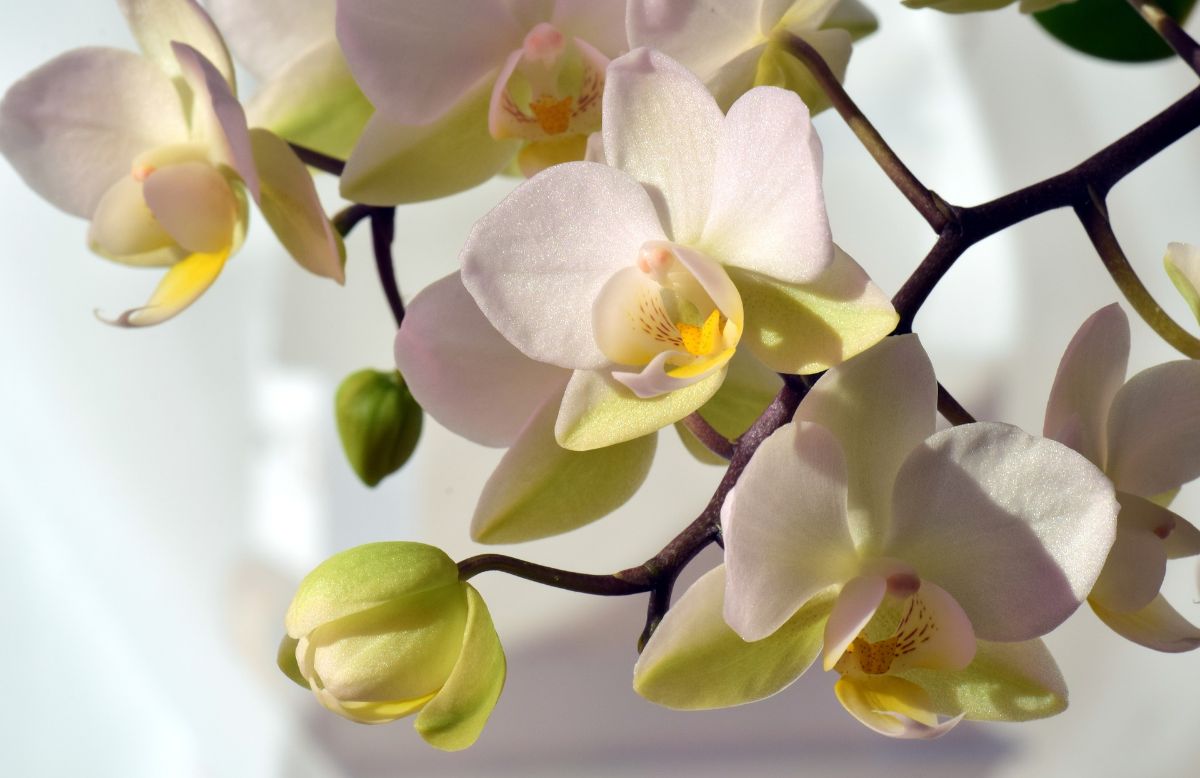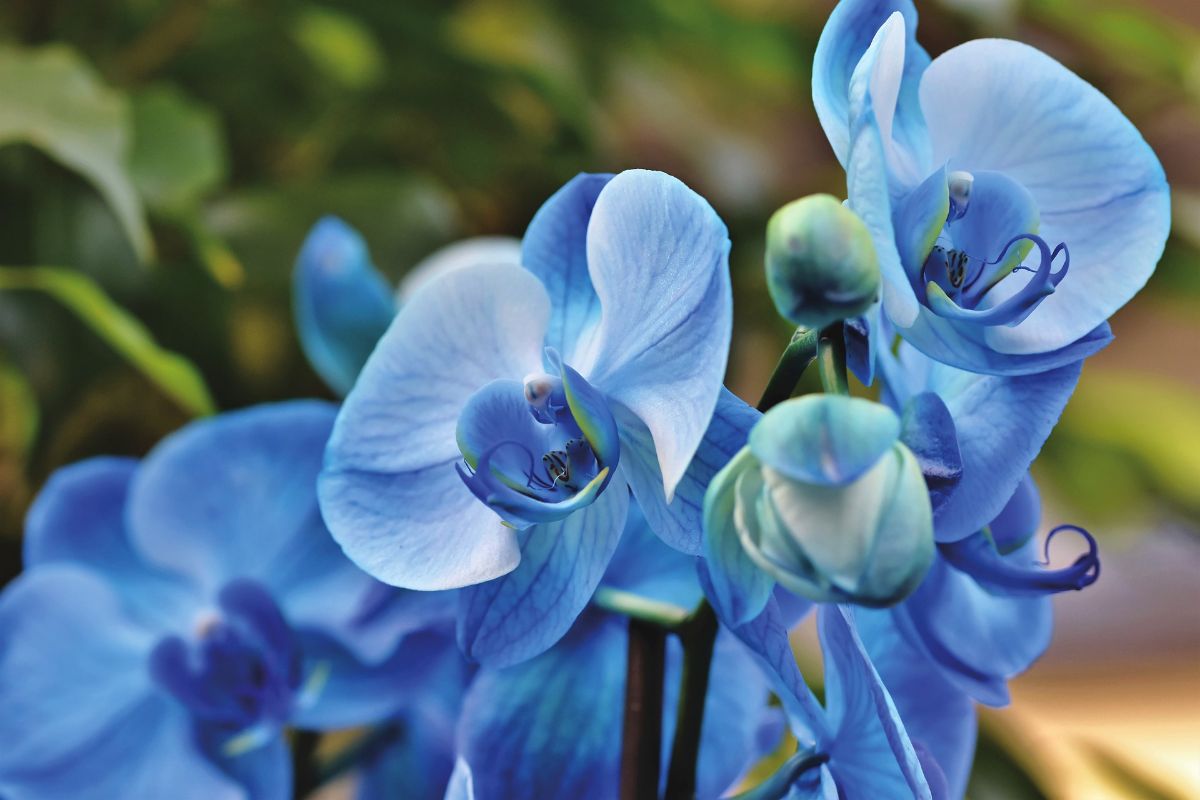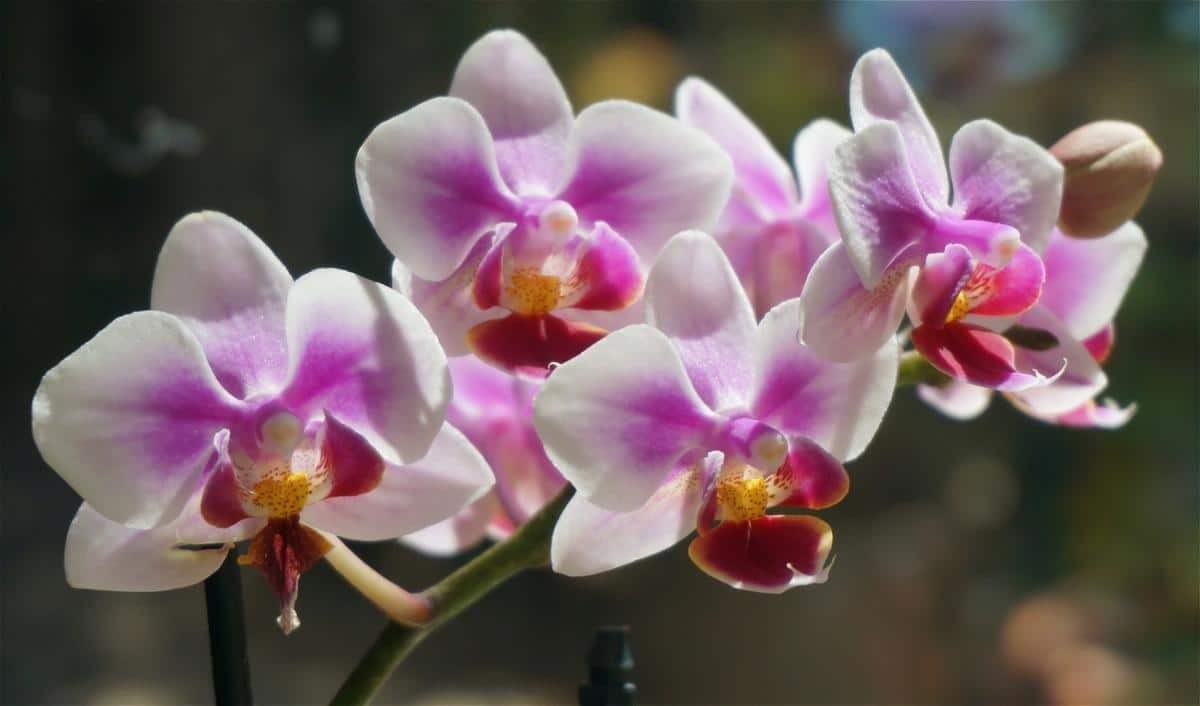
When you have an orchid for a few months, you know that the flowers wither and that the previously precious stem begins to lose its greenness and dry out. At that moment it is normal to wonder every time you look at her "How do you know if my orchid is dead?"
It is a more than normal question and it is that although an orchid loses its flowers and its stems, that does not mean that it is dead, nor that it loses its leaves. So how can you tell when your plant is unrecoverable? We'll tell you then.
The orchid cycle
If you have had orchids, you will know that they carry out a cycle that, if you understand it, promises you to have that plant for many years.
To begin with, when we buy it it will always come in full bloom; that is, we will always acquire it with one, two or three rods full of open or unopened flowers but with force. This will go on for weeks, or even months.
After that time, the flower will wither and finally fall off, and the same will happen with all the others, causing, suddenly, the stem that it had also dry.
After that time, the plant may take several months to return to flower (you already know that for that it has to take a new stem). The reason is that orchids, between one flowering and another, need time to rest and replenish the nutrients. That is why it is so necessary to provide it with an extra nutrient every x time so that it has sufficient strength to flourish again.
However, it may be the case that, instead of returning to life, the plant continues to deteriorate to the point that it does not appear alive. Even so, orchids are able to continue living even without leaves, roots, stems and flowers, and they can revive. How do I know if my orchid is dead? There are several signs that will warn you that he has passed away.
Signs that tell you that your orchid is dead
In general, when you have plants you have to be prepared for any eventuality that may arise. If you also have several species, you should know what are the signs that alert you that there is a problem in it. In the case of orchids, knowing if your orchid is dead is not as easy as it seems, but there are some clues that can tell you that, no matter how hard you fight, the plant is not going to recover.
The rhizome of the orchid
In case you don't know, the rhizome of an orchid is the part that connects the root zone with the bulb, that is, with the stem. This is where the buds are found so that the plant sprouts again.
Well, if this rhizome is dry, yellowish, and not a bit green nowhere is it practically impossible for it to come back to life, that is, your orchid is dead.
On the contrary, if you saw some green part, or a little sprout, no matter how small it might be and how bad it looks; if it is green, there is still hope.
Has no roots
Although we have previously told you that an orchid can continue to live even without roots, it must be borne in mind that these are where it "feeds" on the water. That is, if you do not have a means to nourish yourself, you will inevitably die if you do not find a remedy soon.
The roots of the orchids should be plump, firm and green in color. When these begin to change and look whiter, or begin to turn brown or black, it is because the plant has been watered too much, and it is rotting. If that happens, you have to try to remove the excess water, for example by making an emergency transplant to another pot with the dry soil and not watering for a while, or even cutting the roots that are bad.
What you do need is that, at least one root, or shoots of them, look green. It is true that many cases of rotten roots can be repaired, but when it is too extensive and has caused that no green area remains on the plant, it is very difficult, if not impossible, for it to survive.
A plague
Another point to know if your orchid is dead can come from an infection by insects, fungi or bacteria. One of the most common is the cochineal, which usually feed on the orchid and that, with a little insecticide, alcohol or soap is enough to eliminate it and not cause more problems.
Now, If you do not realize it, or if you pass it, the plant will irretrievably die. Not only that, it is that if you have other orchids next to you, they will also be affected and can end the lives of others.
No regrowth
When your orchid runs out of leaves and stem, it is usual to worry about it, because you really do not know if it is okay or not. And you let her stay for a while to see if she recovers. The problem is that, if that time passes and you do not see that the orchid is revived, or has signs that it is alive, after a few months you end up throwing it away.
Is this a good decision? Yes and no. Normally, when a plant of these goes many months without showing signs of life, it may be because it really is dead. If we follow the cycle of the plant, after that rest to recover, the plant should start to sprout again. The problem is that the absence of green shoots, and the "dead" appearance can indicate that your orchid is irretrievably dead.
Can an almost dead orchid be saved?
Imagine that you have two orchids. One of them has started to yellow, for its roots to become soft, etc. The other is completely black. Surely you would say that the second is dead. But, if you have green parts, no matter how small, it can be saved. It's hard? Much, but feasible.
With this we want to tell you yes, an almost dead orchid can be saved if you put the means to do so. It is not always possible, but these plants have a good ability to regenerate.
So if you come across this situation, don't dismiss it the first time around. Sometimes you may think that your orchid is dead but, underneath that rot, it is possible that the little buds that can save it are found.
Have you ever faced this situation? Have you tried to reverse it successfully? Let us know.



